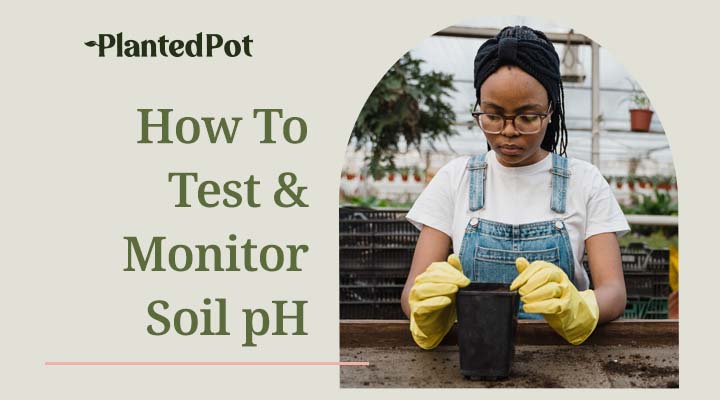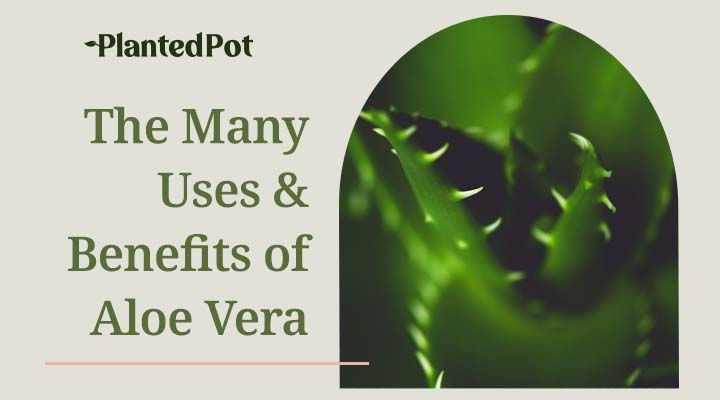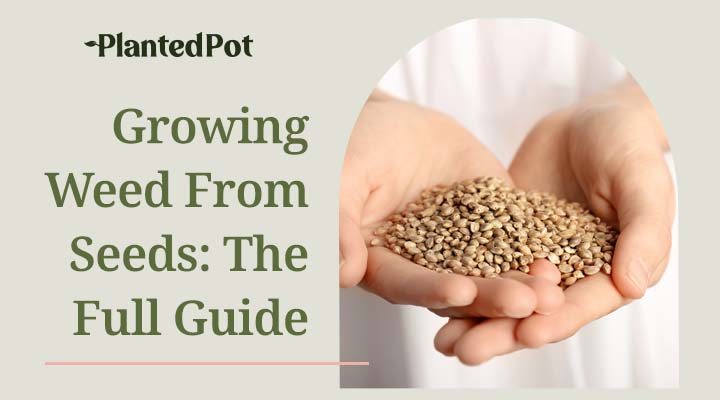
Split Leaf Philodendron Care: How Your Plant Can Thrive & Survive
Home / Split Leaf Philodendron Care: How Your Plant Can Thrive & Survive
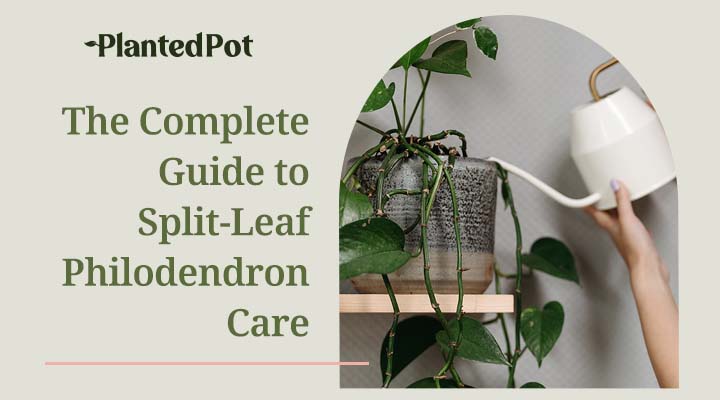
Split Leaf Philodendron Care: How Your Plant Can Thrive & Survive
- Kyle Chin
- February 22, 2021
- 5:11 pm
- No Comments
Ever wanted a large, tropical jungle plant right in your living room? Your call has been answered! Allows us to introduce the split leaf philodendron. Despite its wild origins, this popular plant is relatively easy to maintain. Just allow adequate space for them to grow, as this plant can grow quite large! This guide will give you all the info you need on split leaf philodendron care.
What is a Split-Leaf Philodendron?
Split leaf philodendrons (Philodendron bipinnatifidum) are large, evergreen shrubs with long, dark, glossy leaves. This jungle plant is “self-heading,” meaning it can grow without any nearby tree support.
The split leaf philodendron is often confused with the Monstera deliciosa, but they are two different plants from the same family. These two species are sometimes incorrectly, but there is one major difference. The Monstera deliciosa has holes in its leaves, leading to its name, the “Swiss Cheese plant,” while the split leaf does not.
Although the leaves of the split leaf philodendron are poisonous, it produces berries that are completely safe to eat. Be sure to keep this plant away from pets if they like chewing on things around the house!
Where Do Split Leaf Philodendron Plants Come From?
The split leaf philodendron is native to South America. You can find them in Argentina, Bolivia, Brazil, and Paraguay. The indigenous tribes used this spectacular plant for centuries as both a food and medicinal treatment (a purgative, specifically).
Common Varieties of Split-Leaf Philodendron Plants
Split leaf philodendrons have a few different varieties:
- “Gold satin” – bright, yellow leaves
- “Little Crunchy” – dwarf plant with thick leaves
- “Lime Fiddle” – patterned leaves
Are Split-Leaf Philodendron Plants Easy to Care For?
Yes! Split-leaf philodendrons are very easy to care for. Even though split-leaf philodendrons thrive out in the jungle’s humid conditions, they can still make a great indoor plant. This plant is very tolerant of most environments. Thanks to their aerial roots, they can absorb moisture and nutrients from the air. If you live in a dry region, you can use a humidifier to help your split leaf thrive.
Can You Grow a Split-Leaf Philodendron Indoors or Outdoors?
Yes, split leaf philodendrons are great as indoor plants and outdoor plants! However, be sure to allow plenty of space for them to grow as they can grow up to 10 ft tall and 15 feet wide.
How to Care for a Split-Leaf Philodendron
The split leaf philodendron is a very adaptable plant and is relatively easy to care for. It may take up a lot of space (if you don’t choose to prune), but many people love the beauty and color it adds to their homes.
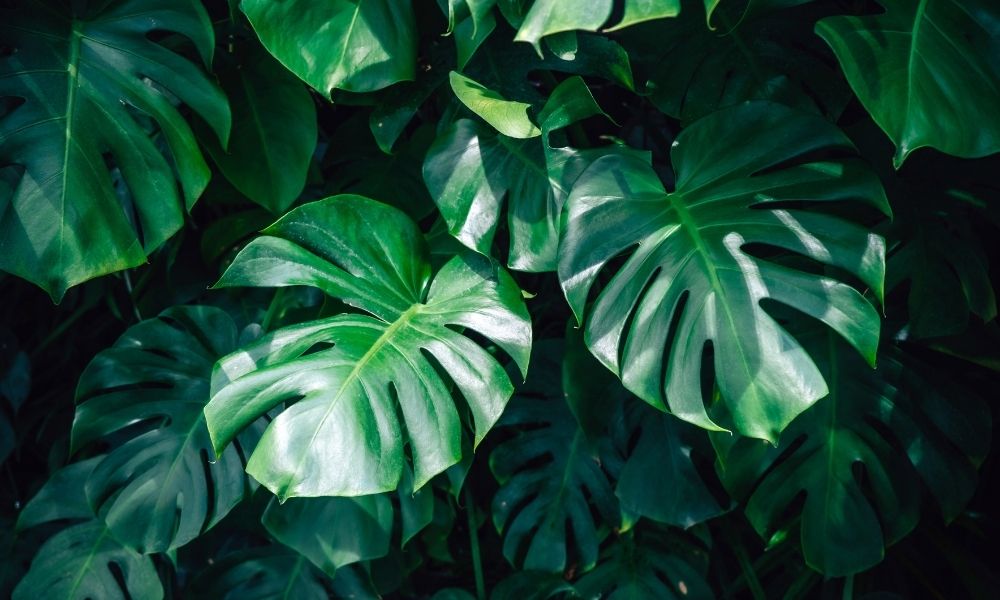
Finding the Right Pot
Split leaf philodendrons are fast-growing plants, so finding the right pot is important. Like most plants, the pot should have good drainage so there is no backlog of water that can cause root rot. The pot should be large enough to hold the plant roots with a few extra inches of space to allow the roots to grow. About 1-2 inches larger than the root ball is a good rule of thumb for a new plant.
Choosing Soil
Split leaf philodendrons thrive with soil that is rich in nutrients. The soil should also be able to retain some moisture but also drain well, so it does not trap too much water. A standard peat-moss based mix should suffice, but if you want to create your own soil blend, a great combination is:
- Peat-moss base
- Perlite
- Regular potting mix
Watering a Split-Leaf Philodendron
Split leaf philodendrons like moist soil (much like in the jungle), but be careful not to overwater the plant. You should water your split leaf philodendron when the first couple inches of soil have dried. Water the soil thoroughly until it has all been soaked and allow the water to drain.
Don’t worry if you forget to water your plant! Split leaf philodendrons are very hardy and can survive with less water. However, if you notice yellowing, it could be a sign they need water. Generally, you should water them every 7-10 days.
Placement and Lighting
Split leaf philodendrons do best with a few hours of bright, indirect sunlight every day. You can place them in a south-facing window so that the sun does not shine directly onto them. Hot, direct sunlight can potentially burn the plant and damage it.
If you notice your split leaf philodendron getting “leggy,” it could be a sign you need to place your plant closer to the light source. A plant that is “leggy” looks outstretched and thin. Plants have a natural tendency to reach towards the light, so make sure you are giving your split leaf philodendron enough indirect sunshine.
Signs of Too Much Light
If your split leaf philodendron starts to have yellow leaves, it could be a sign that it is getting too much light. More mature plants will naturally have yellow leaves, so if your plant is still young, move them farther away from the window or provide a shade source.
Temperature and Humidity
Room temperatures around 65-80°F are perfect for your split leaf philodendron. They naturally grow in the jungle’s warm, humid environments but can adapt to your home just fine. However, be sure not to let the house go any lower than 60°F, as it could be less tolerable for your split leaf philodendron.
Split leaf philodendrons also love humidity. Generally, a good humidity level is around 40%. You can spritz the plant every day or use a humidifier in the room to keep moisture levels high.
Signs of Excess Heat/Cold
Split-leaf philodendrons that are too hot may begin to wilt or droop. You may want to move them to a cooler area or provide shade for the plant.
If the temperature is too cold, it could stunt the growth of your plant. Excess cold can prevent the plant from absorbing the nutrients and lead to plant death. If the leaves start to brown or die, it could be a sign the temperature is too cold.
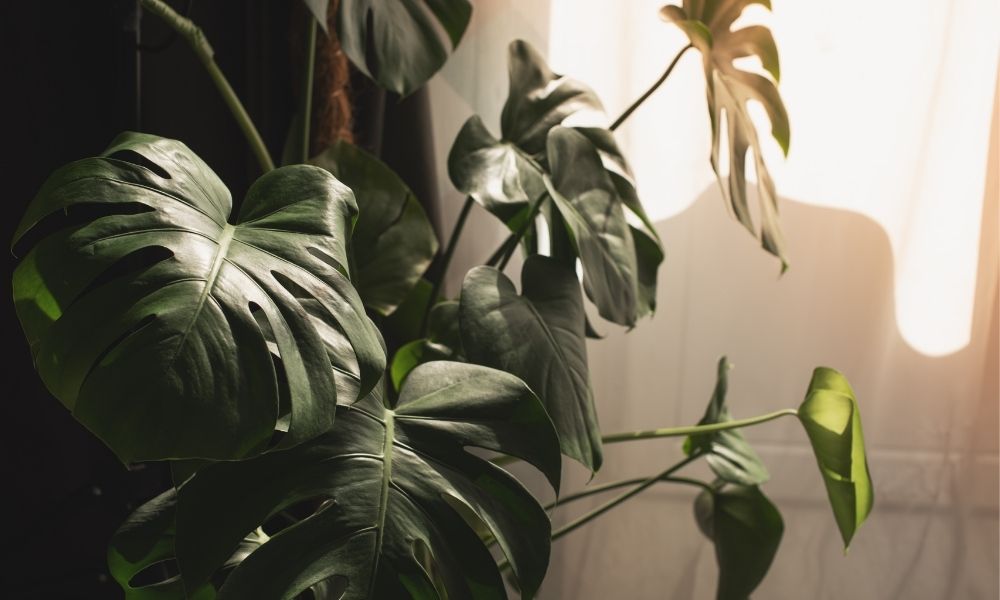
Feeding a Split Leaf Philodendron Plant
Growing seasons for plants are usually around spring and summer. If you consistently repot and add new soil, you don’t need to give your split leaf philodendron extra fertilizer.
However, if the plant starts showing signs of yellowing or is not growing as fast as it used to, you can give it a balanced liquid fertilizer. During the fall and winter, plants are usually more dormant and do not need extra fertilizer.
How Big Can a Split-Leaf Philodendron Grow?
Split-leaf philodendrons are large leaf plants! They can grow up to 10 feet tall and 15 feet wide.
Common Split-Leaf Philodendron Care Issues
Some of the most common split-leaf philodendron care issues are:
- Insects & pests – Scale insects, spider mites, and mealybugs are common houseplant pests. Although generally split-leaf philodendrons do not attract bugs, you should still check once in a while under the leaves. If you notice any infestations, use insecticidal soap or rubbing alcohol to remove them.
- Overwatering – Overwatering is a common problem because many people think more water equals more growth. However, this wide misconception can lead to damaging the plant. Dark brown spots or yellowing leaves usually mean the plant has been overwatered.
- Underwatering – If you notice brown, crispy leaves, your plant may need more water or moisture. Try checking more often to see when the plant needs watering or add a humidifier to boost moisture.
- Yellowing leaves – Yellowing leaves can be a sign that the plant is not getting enough sunlight, lacks nutrients, or is overwatered. Based on your plant care habits, you can better determine the cause of yellowing leaves. Adjust one thing at a time so you can accurately evaluate your plant’s issues.
How Do I Know if My Split Leaf Philodendron is Dying?
All the issues listed above are signs that your split leaf philodendron needs more attention and care. However, if you notice browning or yellowing in multiple areas on the plant, it may be time to start pruning the plant. Those are signs that your split-leaf philodendron is not growing correctly.
If the plant is not growing to expectations, check the bottom of the plant to see if there are any black roots (root death). A good time to check is when you are repotting your split-leaf philodendron for any dead roots that need to be cut off.
But, if your plant is still not growing after cutting off the affected areas, it may be time to start fresh. Remove the dying leaves a little at a time to not kill the plant entirely. Trim the plant down to allow it to restart the growing process.
Should I Be Worried If There Are No Holes on the Leaves?
No, split leaf philodendrons do not have holes on the leaves. If your plant has holes, umm, that would be a problem.
Final Thoughts – Split-Leaf Philodendron Care
Split leaf philodendrons are great indoor plants that can be a great addition to your house. They are lovely beginner plants, and you can learn how to care for them quickly. Once fully grown, split leaf philodendrons will become a fantastic centerpiece in your home.


